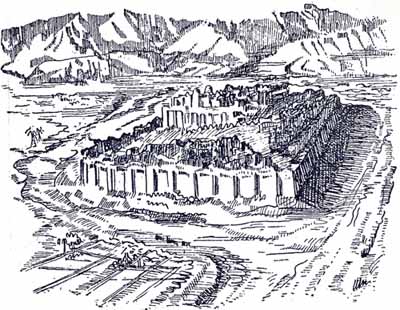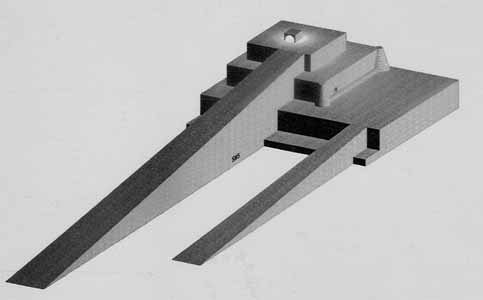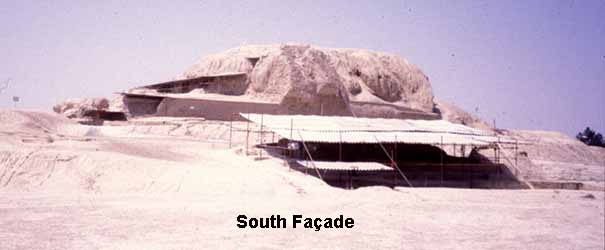Ziggurats in Iran Sialk



Sialk is a large ancient archeological structure in Kashan, Iran.It is claimed to be the world's oldest ziggurat, dating to the 3rd millennium BC, tucked away in the suburbs of the city of Kashan, in central Iran, close to Fin Garden.
What remains of this 5000-year-old ziggurat is not in a favorable condition like many other ancient ruins in Iran. At the site, there are actually two structures (necropolis) at Sialk situated several hundred feet from each other.
The three platforms of the larger ziggurat however still remain in place. Not much remains of the smaller structure.
The Louvre has also excavated a cemetery near the structures that have been dated as far back as 7500 years.
Sialk is one of four ziggurats built by the Elamite civilization. The other three are:
Choqa Zanbil (1250 BC),
Susa ziggurat (1800 BC), and
Haft Teppeh (1375 BC), all in Khuzestan.
The Ziggurat at Ur was rebuilt by Saddam Hussein with bricks stamped with his name. Sialk is the 32nd and most recent ziggurat to be discovered.
"Teppe Sialk" (In Persian, Tappe means "hill" or "mound") was first excavated by a team of European archeologists headed by Roman Ghirshman in the 1930s. His extensive studies were followed by D.E.McCown, Y. Majidzadeh, P. Amieh, up until the 1970s, and recently reviewed by Iran's Cultural Heritage Organization in 2002 (led by Shah-mirzadi, PhD, U of Penn). But like the thousands of other Iranian historical ruins, the treasures excavated here eventually found their way to museums such as The Louvre, The British Museum, The Metropolitan Museum of Art in New York, and private collectors.
The Sialk ziggurat has 3 platforms, and although the ziggurat itself was built in 2900 BC, it still predates Urnamu's Ziggurat at Ur, which was built in 2100 BC. However, the earliest archeological remains of the north mound date back to the middle of the 6th millennium BC, i.e. about 7500 years ago. A joint study between Iran's Cultural Heritage Organization, The Louvre, and Institute Francais de Recherche en Iran also verifies the oldest settlements in Sialk to date back to 5500 BC.
Sialk, and the entire area around it, is thought to have first originated as a result of the pristine large water sources nearby that still run today. The Cheshmeh ye Soleiman (or "Solomon's Spring") has been bringing water to this area from nearby mountains for thousands of years. The Fin garden, built to its present form in the 1600s is a popular tourist attraction today. It is here where Persian Kings of the Safavid dynasty would spend their vacations away from their capital cities. It is also here where, Piruz (Abu-Lu'lu'ah), the Iranian assassin of Islam's second Caliph is buried. All these remains are located in the same location where Sialk is.
What little is left of the two crumbling Sialk ziggurats is now threatened by the encroaching suburbs of the expanding city of Kashan. It is not uncommon to see kids playing soccer amid the ruins, while only several meters away lie the supposedly "off limit" 5,500 year old skeletons unearthed at the foot of the ziggurat. The site still remains to be registered as a World Heritage Site at UNESCO for protection.
